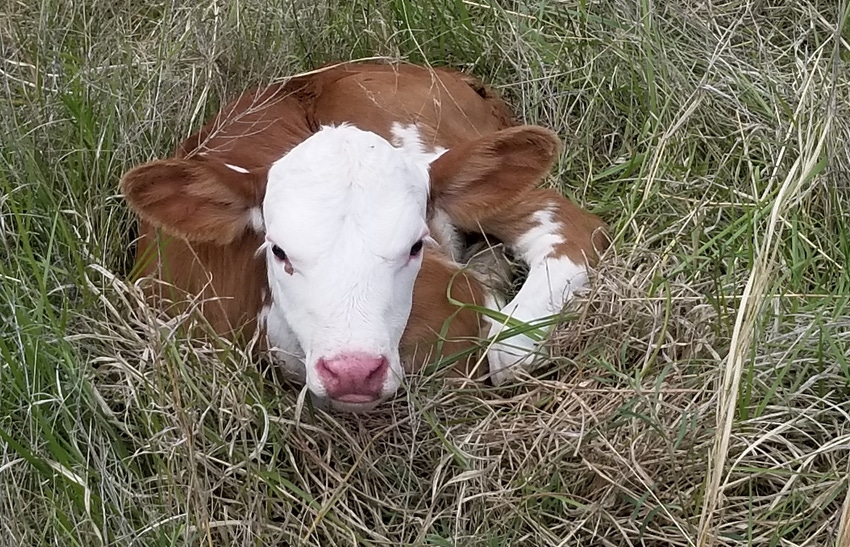
A few weeks ago I wrote a blog focused on Johann Zietsman’s discovery about grazing at ultra-high stock density and breeding truly pasture-efficient cattle. I wrote that it will someday dramatically change the industry.
In a few days, I received an email from an interested reader who said he understands the points, but is concerned about selling calves that essentially aren’t sale-toppers. I know he’s not alone in that worry, as I’ve heard it dozens of times from others who are considering moving away from the industry-standard big cows.
I’ve been a little slow formulating a response, but here it is. I’ll start off with a hypothetical example using prices last week from the Oklahoma weekly cattle auction summary from the Agricultural Marketing Service. This was for the week ending June 26.
I had to make some other assumptions, so I decided this hypothetical manager is moving from selling big black cattle to smaller calves, perhaps colored calves. But I’m also assuming he continues using good genetics, just from smaller-framed animals.
Medium and large steers #1
550-598 pounds at $145.12
575 x $145.12 = $834.44 per head
Medium and large steers #1-2
406-445 pounds at $146.46
425 x $146.46 = $622.46 per head
This price relationship, with both classes bringing the same price per pound, is atypical but not unusual. Often, the lighter calves will bring quite a bit more per pound, but not always. Part of the income equation is about timing your sales to good demand for the type calves you are selling.
One of the biggest questions you must answer is whether you can produce twice as much or three times as much beef per acre with intensive grazing and higher-efficiency cattle that fit such a system. If so, the simple way to compare the calves we’ve imagined above is to multiply the probable price per pound by the number of pounds per acre, then times the number of acres you manage.
Hence, if you are producing twice as many pounds of beef per acre and selling calves as per the example above, you’re still winning.
You could test this by examining your own cattle and nearby markets frequently during the times you currently sell calves and the alternate times you might sell calves and see how it would work for you.
Further, you really need to consider how much you are spending on these modern-bred cattle and how much you could save with forage-thrifty cattle and good grass management. Cost savings can be a huge boost to profits.
Some people say direct marketing of beef to the consumer is the answer, but that’s a complex solution many don’t want to undertake.
Here are some more thoughts on the matter.
Two people on a discussion group in which I’m privileged to share offered these thoughts the other day on running many more cows and marketing smaller calves. I didn’t ask permission to share their names and stories, so I’m giving you only the insight from their experiences.
Producer 1
“I have a neighbor who is a pretty conventional guy. He buys bulls from registered producers, Red and Black Angus, gain tested, too much milk EPD, and so forth, but by conventional standards pretty mainstream good bulls. He calves in January, feeds lots of hay. Last year he sold his calves on a video auction for December delivery, weaned his calves late October fed lots of grain to get them to delivery day in good shape. He topped the market on his steers at that time weighing 600 pounds at $1.50 per pound or $900 each.
“I calve in May-June, my cows are 200 pounds smaller than his, I weaned in late December sold in early February when buyers wanted light calves for grazing. I sold steers weighing 380 pounds for $2.33 per pound or about $885 each. His calves were all solid color reds and blacks, mine were mostly that with some red and black baldies, and some Mashona and South Poll breeding. I don't know how much lower my costs are than his, but my stocking rate is almost double his. So if you can do a decent job of marketing and control you costs, you don't need to worry too much about market acceptability. Timing is everything in calving, marketing.”
Producer 2
“I’ve been talking to cow brokers about moving 1,000-plus head of my cows a year and I think I can get pretty good prices.
“The other thing is, I’m running 1,600 cows and 1,100 heifers on a ranch that used to run 700 cows. I don’t really care about giving up $150 per head (a previously mentioned discount by another producer) when I’m actually running a profitable cattle operation and am still increasing profit each year.
"I want to chase profit per acre not profit per animal.”
About the Author(s)
You May Also Like




